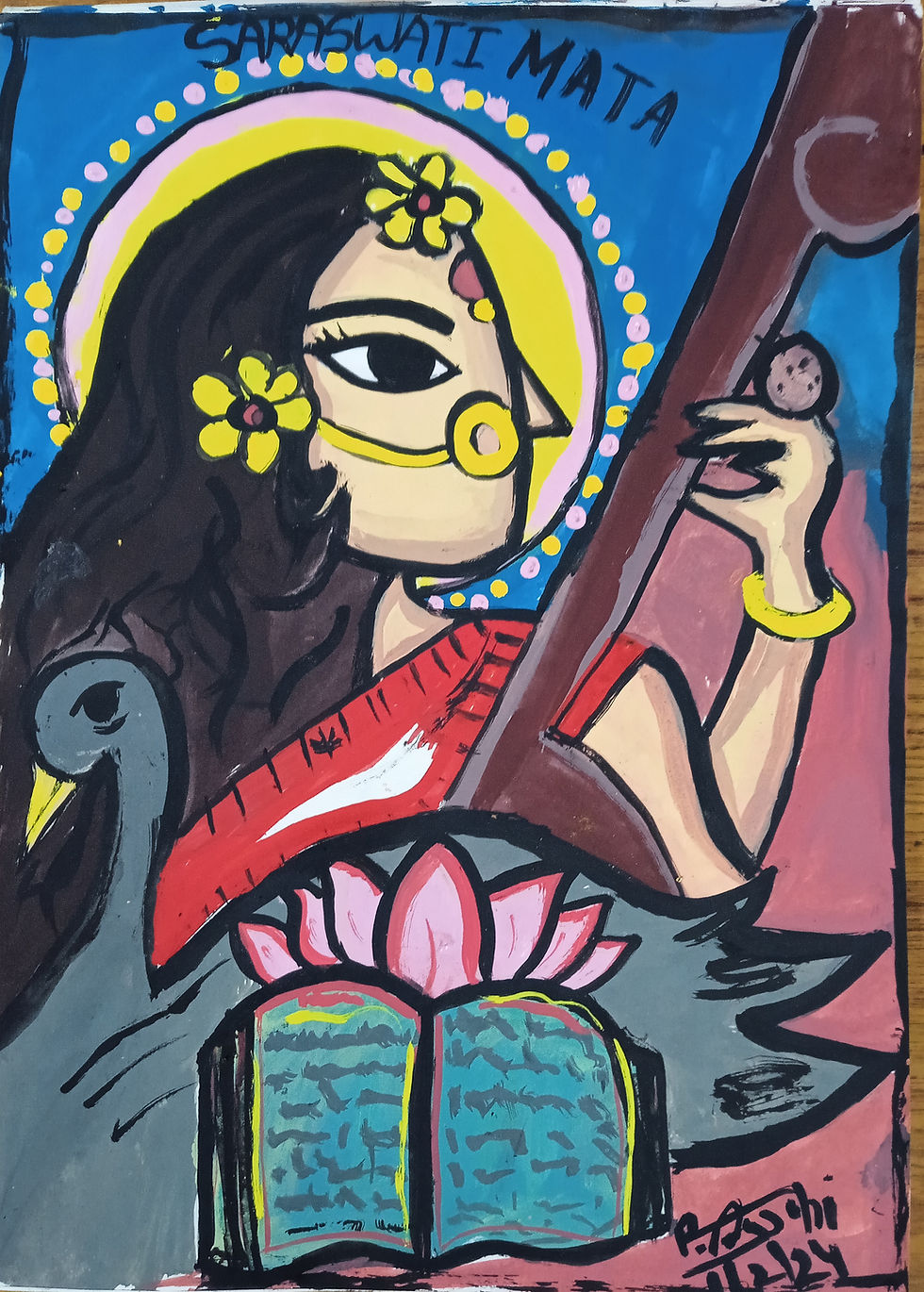Why Indian Kids Love Drawing Gods and Goddesses
- CAMI Info
- Aug 29
- 2 min read
Updated: Nov 21
India is a land of stories, colors, and traditions. From the time children are very young, they hear tales of gods and goddesses — Krishna’s playful mischief, Saraswati’s wisdom, or Durga’s courage. These stories are not just told through words but through art, festivals, and rituals that children see all around them.
No wonder Indian children feel a natural connection when they draw or paint gods and goddesses. For them, art becomes a way of celebrating culture while expressing their emotions. At the Children’s Art Museum of India (CAMI), we believe this bond between mythology and creativity is a beautiful way for kids to explore who they are.

The Role of Gods and Goddesses in a Child’s World
Children grow up surrounded by visual art forms — idols in temples, rangoli during festivals, or mythological illustrations in Amar Chitra Katha comics. These images are colorful, emotional, and inspiring.
For a child, drawing Saraswati with a veena may express respect for learning, while painting Ganesha may symbolize joy and playfulness. Such art goes beyond religious expression — it becomes a way for kids to connect emotionally with values like courage, kindness, or wisdom.
Why Indian Children Connect Emotionally Through Art
1. Stories Come Alive in Colors
Children love stories, and Indian mythology is full of them. When they draw Krishna stealing butter or Hanuman carrying the mountain, they are retelling these stories in their own way — with emotions shining through colors and strokes.
2. Art as a Bridge Between Generations
Grandparents tell stories of gods and goddesses, parents celebrate festivals, and children bring these traditions alive on paper. Through drawings, kids feel connected to family values and cultural heritage.
3. Emotions Made Visible
Durga’s courage, Krishna’s joy, Shiva’s calm — each deity represents an emotion. Children naturally connect to these emotions and use art to express them in ways words cannot.
4. Festivals as Inspiration
During Diwali, Holi, Navratri, or Ganesh Chaturthi, children are surrounded by color, light, and joy. Many schools even hold drawing competitions around these festivals, allowing kids to channel their festive emotions into art.
Beyond Religion: Art as Emotional Learning
It’s important to note that for children, drawing gods and goddesses isn’t only about worship. It’s about learning emotions through symbolism. For example:
Drawing Saraswati = valuing knowledge
Drawing Krishna = celebrating playfulness
Drawing Durga = understanding bravery
Drawing Ganesha = joy, prosperity, and removing obstacles
These artworks give children a language of emotions that stays with them for life.
Tips for Parents and Teachers
Encourage kids to share the story behind their artwork.
Focus less on accuracy and more on the emotion expressed in the drawing.
Introduce children to Indian folk art (like Pattachitra or Madhubani), where gods and goddesses are central themes.
Celebrate kids’ drawings of deities as part of cultural and emotional growth.
Indian children don’t just draw gods and goddesses — they draw courage, joy, playfulness, wisdom, and compassion. Through mythology and art, kids create a bridge between culture and emotions. At CAMI, our upcoming ArtFest: Draw Your Emotions celebrates this unique connection, helping children explore and express the stories they carry in their hearts.
🔗 Explore more at: www.childrensartmuseumofindia.com




Comments